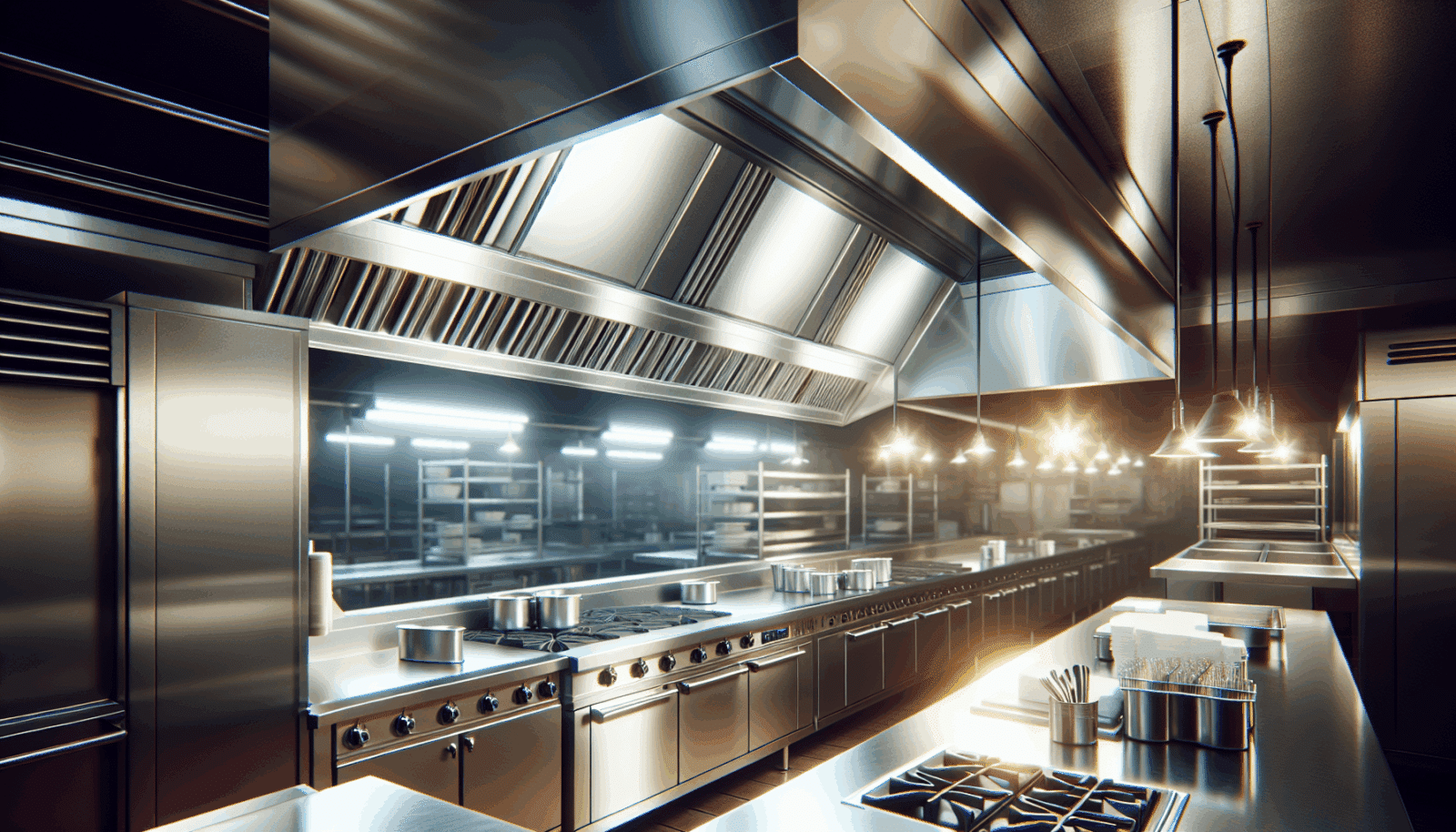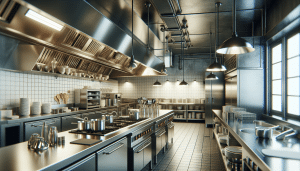Kitchen Hoods are essential in maintaining cleanliness and air quality in your kitchen, but often, the task of degreasing them can seem daunting. At Utah Hood Cleaning, we understand this challenge and are here to provide homeowners with the ultimate guide to kitchen hood degreasing. Whether you’re in Salt Lake, Davis, or Utah County, this guide is packed with tips and tricks to make the process easier and more effective, ensuring your kitchen remains a safe and pleasant environment.
The Importance of Regular Hood Cleaning
Maintaining a clean kitchen hood is not just about keeping your kitchen looking nice; it’s also a safety issue. A dirty hood can become a fire hazard, as Grease and other debris can easily ignite. Furthermore, a clean hood ensures your kitchen’s air quality is at its best, keeping you and your family healthy. Regular cleaning prevents the build-up of grease, ensuring your hood functions efficiently and lasts longer.
At Utah Hood Cleaning, we stress the importance of a regular cleaning schedule. It’s not just about immediate appearances; it’s an investment in your kitchen’s long-term functionality and safety. Let’s dive into how you can effectively degrease your hood and keep your kitchen safe and sparkling.
The Right Tools for the Job
Before you begin the degreasing process, it’s crucial to have the right tools at hand. Investing in quality cleaning supplies can make a significant difference in the effectiveness of your cleaning efforts. High-grade degreasers, scrub brushes, microfiber cloths, and protective gloves are essentials. These tools not only make the degreasing process more efficient but also protect your skin and kitchen surfaces from harsh chemicals.
We recommend choosing environmentally friendly degreasers when possible. Not only are they effective at cutting through grease, but they also ensure that you’re not introducing harmful chemicals into your home environment. Remember, the goal is to create a clean and safe kitchen, not just to temporarily remove visible grime.
Step-by-Step Degreasing Process
If you’re new to Kitchen Hood Cleaning, the process might seem overwhelming. However, breaking it down into manageable steps can significantly simplify it. Start by removing any large debris and wiping down the surface to remove excess grime. Then, apply your chosen degreaser according to the product instructions, allowing it to sit and break down the grease.
After the degreaser has had time to work, begin scrubbing with your brush or sponge. Depending on the amount of build-up, this may require some elbow grease. Finally, wipe down the hood with a damp cloth to remove any residual degreaser and dirt. You’ll be amazed at how much brighter and cleaner your hood looks with just a bit of effort.
Understanding Degreaser Types
Not all degreasers are created equal, and understanding the types available can help you choose the best one for your kitchen hood. Solvent-based degreasers are powerful and effective at cutting through thick grease but may be too harsh for some surfaces. On the other hand, water-based degreasers are gentler and more environmentally friendly but might require more product and elbow grease to achieve the same results.
At Utah Hood Cleaning, we typically recommend starting with a water-based degreaser for regular maintenance. If you’re dealing with a heavily soiled hood, a solvent-based degreaser may be necessary. Always test a small, inconspicuous area of your hood first to ensure the degreaser does not damage the surface.
DIY Vs. Professional Cleaning
While many homeowners are keen on the idea of DIY kitchen hood cleaning, there are times when professional help is needed. For regular maintenance and light degreasing, a DIY approach can be effective and cost-saving. However, for deep cleans or if you’re facing years of built-up grease, calling in professionals like us can save you time, effort, and potential damage to your hood.
Professional cleaners have the experience, tools, and industrial-grade degreasers to handle even the toughest jobs. Moreover, we ensure that your hood is not just clean on the surface but thoroughly degreased, including areas that are often overlooked or difficult to reach. Choosing between DIY and professional cleaning depends on your specific situation, but remember that regular maintenance can help prevent the need for heavy-duty cleaning down the line.
Preventative Maintenance Tips
Preventing grease build-up in the first place is key to reducing your cleaning workload. Ensure that you’re using your kitchen ventilation properly by turning it on every time you cook. This simple step can significantly reduce the amount of grease that settles on your hood. Additionally, wiping down the external surfaces of your hood after cooking can prevent grease from hardening and becoming more difficult to remove later.
Another tip is to schedule regular deep cleans, whether you opt to do them yourself or hire professionals. These deep cleans ensure that any potential grease build-up is addressed before it becomes a bigger problem, keeping your kitchen safe and your hood in good working condition.
Common Mistakes to Avoid
When it comes to degreasing your kitchen hood, a few common mistakes can hinder your efforts. First, avoid using abrasive tools or harsh chemicals that can scratch or damage the hood’s surface. It’s important to choose the right degreaser and tools for your specific hood material. Another mistake is neglecting the filters. Hood filters play a crucial role in trapping grease and should be cleaned regularly in addition to the hood itself.
Lastly, procrastination is a significant barrier to effective hood cleaning. It’s easy to put off this task, but the longer you wait, the harder and more time-consuming the cleaning process will be. Establish a regular cleaning schedule and stick to it to avoid these common pitfalls.
When to Replace Your Hood Filters
Hood filters are your kitchen hood’s first line of defense against grease and other debris. Over time, these filters can become clogged and lose their effectiveness, posing a fire risk and reducing your hood’s efficiency. It’s important to regularly check your filters for signs of wear and tear and to clean them as part of your hood maintenance routine.
If cleaning no longer restores them to a satisfactory condition, it may be time to replace them. We recommend inspecting your hood filters every few months, depending on usage, and replacing them at least once a year for optimal performance.
Top 5 Degreasing Tools and Products
- High-quality degreaser: Choose a degreaser specifically designed for kitchen hoods to ensure it’s powerful enough to cut through grease but safe for your specific hood material.
- Non-abrasive scrub brushes: These brushes allow you to scrub away grease effectively without scratching the surface of your hood.
- Microfiber cloths: Perfect for wiping away grease and polishing your hood after cleaning, microfiber cloths are gentle on surfaces and highly effective.
- Protective gloves: Always protect your skin from degreasers and grease by wearing durable, chemical-resistant gloves.
- Replacement filters: Keep a set of replacement filters on hand to swap out old, greasy ones, ensuring your hood’s efficiency and safety.
Cleaning your kitchen hood might seem like a daunting task, but with the right tools, techniques, and a bit of elbow grease, it’s entirely manageable. Remember, regular maintenance is key to preventing grease build-up and ensuring your kitchen remains a safe, clean environment for you and your family. And when the task seems too big to handle on your own, don’t hesitate to call us at 801-853-8155 or Request a Free Quote. We’re here to help with all your hood cleaning needs in Salt Lake, Davis, and Utah County.




